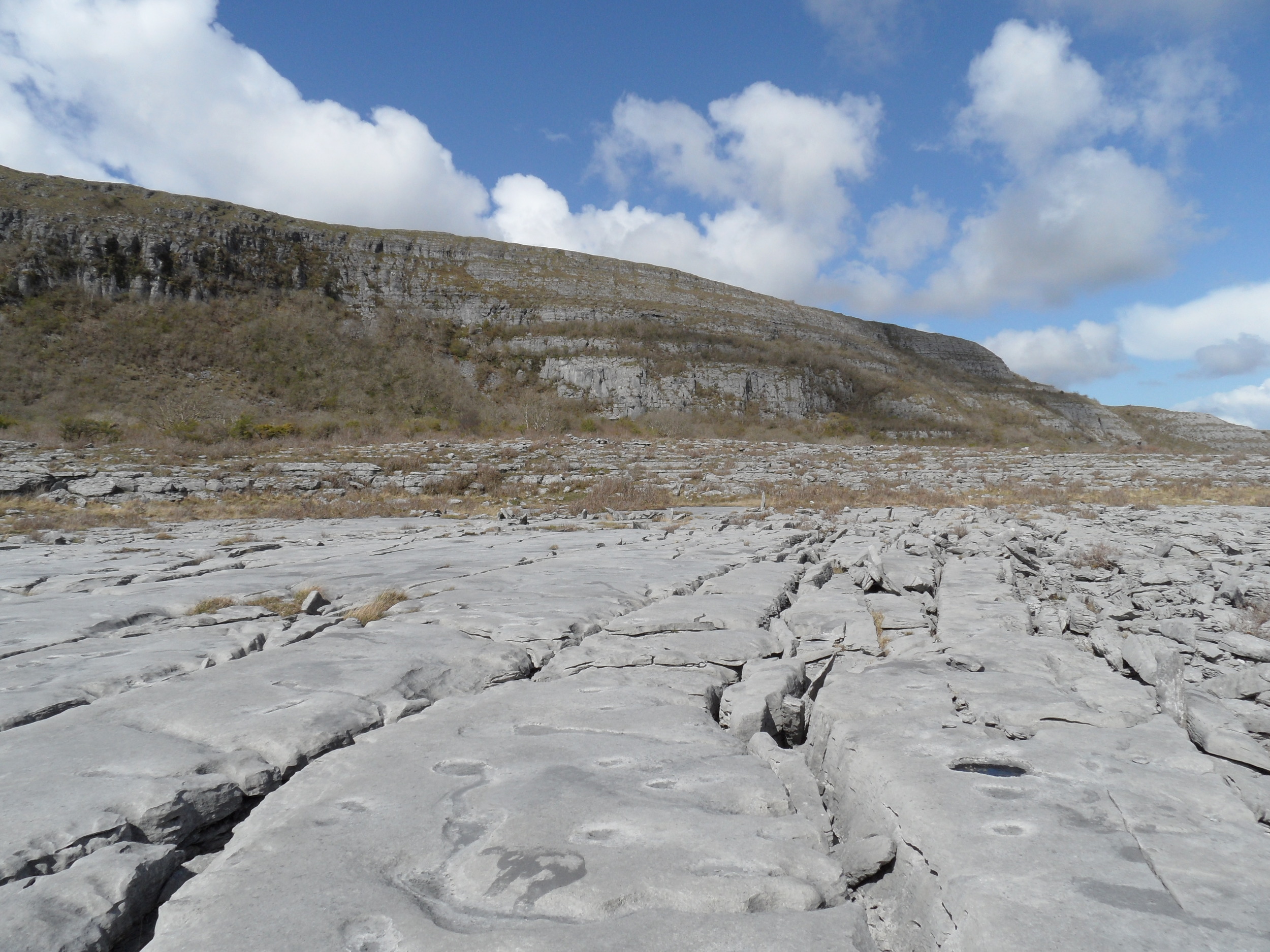Stranger in a strange land
/LENNY ANTONELLI takes a ramble through the empty lunar landscape of the east Burren
DO HILLWALKERS SHUN the Burren? We tend to think the only hiking destinations around these parts are in Connemara or Mayo. Sure there’s no mountains in the Burren. But walking here is unlike anywhere in Ireland – the wildlife-rich limestone is the perfect antidote to our other soggy brown hills.
The tour buses head west towards the Cliffs of Moher, but I went east instead to 326m Slieve Carran, known for its steep cliffs. A warren of tiny boreens criss-crosses the bare limestone landscape, and there’s barely a house. Just try giving directions out here. “Never have you been in stranger country,” Irish naturalist Robert Lloyd Praeger wrote of this part of the Burren. I set out from the car park at Slieve Carran and followed the trail through a gate. Those seeking a relaxed casual ramble can take the 2.5km looped walk that circles through limestone pavement, hazel woodland and wildflower-rich grassland in a section of Burren National Park. It also visits the oratory and cave at the base of the cliff, said to have been a 7th century hermitage for St Colman Mac Duagh. With its moss-covered woodland and clear spring, it’s quite the retreat.
But I veered off the trail and up the hill left of the cliffs. This was trickier than it looked: hazel thicket blocked my path, and when I found a way through I had to scramble up a wall of rock. Soon the going got easier. Hares darted up the mountain. Early purple orchids and spring gentians were in bloom, and the strange lunar ridge of the Turloughmore hills to the east dominated my view.
I ducked under a wire fence, and over a dry stone wall that I followed northeast above the cliffs until I spotted the giant cairn on the summit to the west. Once there, I could see the mountains of Connemara across Galway Bay, and east into the Slieve Aughty hills.
I once tried to make a loop down from the summit north of the cliffs to the limestone pavement and car park below. But I was blocked by a mix of hazel thicket, farmland and steep ground, and I emerged bruised from dense scrubland. “There is a way down there, but you really have to know where you’re going,” a walker I met on top said. If you want to go back to the car park from the summit, best return the way you came. This time I ventured deeper into the grey hills, heading for a stone wall running northwest to the next hill. A herd of wild goats saw me and scurried. The going got tough as the grass vanished, and I skipped over deep fissures in the limestone. I spotted mossy carpet and thought it would make easier terrain; instead my leg plunged a metre down a crevice hidden below.
Three hundred and fifty million years ago, most of Ireland was bathed in tropical seas. The calcium-rich remains of animals such as corals, crinoids and sea urchins fell to the sea floor and compressed over the eons to form this limestone. Recent ice ages stripped surface soils and shales, smoothed the hills and scooped out the valleys. Meltwater and rain worked away at weak points in the rock to create fissures and caves.
I didn’t have time to take in the summit of Turlough Hill to the west, so I aimed north for the third hill on my route, Slieve Oughtmama. I kept following the dry stone wall – which marks the Clare-Galway border – to this final summit. The glassy surface of Galway Bay mirrored the blue sky. The landscape was divided sharply between grey hills, lime valleys and the azure bay.
I followed the stone wall down the limestone ridge towards my end point on the N67 by the coast. But the crevices were deeper than ever now, the rocks further apart, and the stone looser. A common lizard scurried under a rock. I stared deep into a dark fissure at ferns and wildflowers growing down below. This is strange country indeed.
Burren Beo Trust, burrenbeo.com
East Burren, Co Clare
Map: Ordnance Survey. Discovery Series. Sheet 52 for Slieve Carran. Sheet 51 for rest of walk.
Start: Car park at Slieve Carran, northwest of Carran village, Co Clare. Grid reference M 333 034. Heading west from Kinvara take the first left immediately after the town onto the Moy Road. Continue for about 7km, taking the first right after the crossroads. The car park is about 1km down on the right.
Finish: N67 at Abbey Hill between Kinvara and Ballyvaughan. There is also a looped walk marked from the Slieve Carran car park and Tony Kirby’s book The Burren Aran Islands: A Walking Guide also details another loop in the area.
Distance : 9km.
Time: Four hours.
Suitability : Moderate to strenuous for the full route. Involves some scrambling and hopping stone walls, and the terrain can be demanding. Watch out for hidden crevices and sudden cliffs. You will probably encounter horses and cattle en route, so give them a wide berth. Bring rain gear, warm clothes, map, compass, food, phone and fluids. Sturdy boots essential.
Food and services: Shop and pub at Bellharbour, a few miles west of my end point. More services in Kinvara, Gort, Corofin and Ballyvaughan.
Further information : Information on marked trails from Burren National Park

